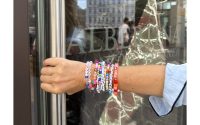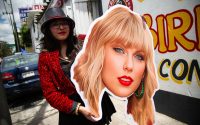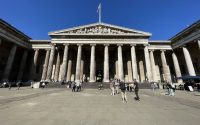At SXSW, Cheech Marin Talks Identity Politics And What It Means To Be Chicano
Of all the discourse that permeates today’s never-ending newscycle, gender, identity, and race issues create the most heat. But, where there is heat there is light, and comedian and ARTnews Top 200 Collector Cheech Marin was happy to shed some during an on-stage conversation with ARTnews at the 2023 edition of South by Southwest Conference and Festival.
Marin was there to discuss the Cheech Marin Center for Chicano Art & Culture at the Riverside Art Museum in California, which opened last year and is propelled by his vast collection of Chicanx art.
“You know, Chicano is a voluntary category,” Marin said, when asked about identity politics in the US. “There’s no box you can check on the census that says Chicano. So, I took that as a cue—well if that’s the case, you can have voluntary rules too. We can make this up as we go along.”
Marin followed that with a brief history of the term Chicano and how he came to associate himself with the expression in the inimitable way that has garnered him millions of fans starting with the turned-on comedy duo Cheech and Chong.
“Chicano was originally a derisive term from Mexicans–to other Mexicans,” Marin said. “The concept being that the Mexicans who had moved from Mexico and were now living in tin shacks along the border in Texas, and Arizona, and California, were no longer truly Mexicanos because they had left their country. They were something less. They were little satellite Mexicans, little Chicos, you know, that where the term came from—at least according to me,” he added with a laugh.
Marin spoke about growing up in South Central L.A. and about constantly hearing “yo Mexican” when someone wanted his attention. “I’m not Mexican, I’ve never been to Mexico. I don’t speak Spanish. How am I Mexican?”
Then his uncle told a story at the dinner table about a mechanic who wanted to charge him $250 to fix his car. “What?” his uncle told the mechanic. “Just give me a pair of pliers and some tin foil and I’ll fix it myself. I’m a Chicano mechanic.”
“Right then I said, ‘That’s it…that’s what I want to be’ and I’ve identified as Chicano from that day forward,” Marin said. “Because really, it’s about a ‘can do’ spirit, about not letting anything stop you. But you know, whether you want to call it Chicano, Chicanx, Latinx, Mexican American–this whole school of art is based on description of culture. It’s the life we are describing in 1,000 shades of brown.”
Marin added that this way of describing and aligning with cultures is a constant and younger generations wanting to take ownership of their culture and its descriptors made perfect sense.
“I get why different generations want to call it something different, because you want to identify it with your age group. You can call it anything you want. You know, that part doesn’t bother me at all. If you want to be Chicanx, cool. Malcolm X went that route, you know, he added an X. Cool; cool man. It’s all a description of culture, from our most public moments and fighting for the rights of the Chicano audience, to the most intimate moments of your life and your love and your children and your family. That’s what makes up Chicano art,” he said.
Few have done more than Cheech to promote Chicano art. And with the establishment of his museum and cultural center in Riverside, California, practitioners and admirers of Chicano art now have a north star, just a few hours driving distance to Los Angeles.



